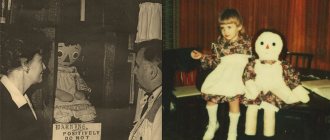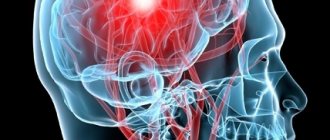Severe fear is the body’s reaction to a suddenly appearing external stimulus that is fraught with danger. Adults mostly easily tolerate fear of any strength, since their psyche is completely formed. Children, on the contrary, cannot control their emotional response, and for them any fear is strong. A severe fright is not as terrible as its consequences often are. The states of fright and fear are often confused. Fear is an emotional reaction to a perceived danger. Psychologists attribute it to the instinct of self-preservation. Fear refers to a reflexive reaction to a situation. This condition is often accompanied by fear, although this is not always an indispensable condition. Often fear is expressed in forms such as aggressiveness, concentration, stupor or panic.
Let's talk about the problem
In order to understand how to get rid of it, you first need to understand what it is. What is fear and how does it manifest itself? Severe fear or, in medical terms, shock neurosis is an instant, sudden fear caused by a strong stimulus. This reaction is a complex of fear and an orientation reflex. As a result of the shock experienced, psychosomatic disorders appear. Most often, young children or children with developmental delays are afraid. Sudden movements, loud sounds, a scary mask or a banal loss of balance are the most common causes of such a psychopathological condition.
The danger is that if treatment is avoided, it develops into phobias, the so-called. constant obsessive fears.
Features of the problem
In order to choose ways to get rid of a problem, it is important to understand what it is. Severe fright (shock neurosis) is a sudden, instant fear that is caused by a serious irritant. This reaction is a combination of an orientation reflex and fear. After a shock, a person experiences psychosomatic disorders.
A state of severe fear is most often experienced by young children. A similar problem is typical for children who lag behind their peers in development.
Manifestations in a child
Confusion during fear manifests itself in every person, since it is an atypical condition. The most common manifestations of cowardice in children include:
- periodic shuddering in sleep and constant crying of the child;
- frequent awakenings for no reason or complete lack of sleep;
- stuttering;
- nervousness and irritability;
- depressed and depressed state;
- increased blood pressure, rapid pulse;
- stupor with development of numbness.
If you observe such symptoms, you need to contact highly qualified specialists. The disease cannot be ignored; it must be treated, because the consequences can be very serious. If your child also has a headache, you need to react quickly.
Factors that increase the degree of shock:
- unexpectedness of the situation;
- similar things have happened in the past that left a negative impression;
- the internal psychological state of a person at the time of action.
Symptoms in an adult
The manifestations of fear in adults and children are quite similar. In adults, signs of fear may also include:
- cough;
- sleep disturbances (you often wake up during sleep);
- increased heart rate and pulse;
- the patient begins to stutter without the ability to stop on his own;
- squeezing sensation, coldness in the chest, the chest may hurt;
- hypertension, high blood pressure;
- throbbing pain, as if electric shock is hitting the head;
- paralytic stupor.
Have you ever wondered why a person screams in fear? This occurs due to severe emotional shock. The nervous system gives its reaction to the stimulus.
Typical symptoms
Severe fear in an adult is similar to the symptoms that appear in children. Among the main signs:
- sleep disturbance;
- coughing;
- increased heart rate;
- stuttering;
- paralytic stupor.
Why does a person’s heart beat so fast when they are frightened that they start screaming? The reason is severe emotional shock. The nervous system reacts to an external stimulus. That is why people, numb with fear, after a while, begin to scream loudly.
Possible consequences
Before choosing a treatment technique, you need to understand what the causes and consequences of fear may be. This disease is psychological, and its results can be very unpredictable. There can be any reaction to fear. It all depends on the mental state of the person. If you are very impressionable or have heart disease, then being scared can cause more severe consequences.
Being frightened, a woman causes embarrassment in the eyes of a man. By nature, the weaker sex is more timid. A slight fear most often does not lead to severe pathologies.
In childhood, the most common consequences are loss of speech and isolation. In rare cases, fear can cause speech delay for up to 5 years. In adults, fear can even lead to death. It is impossible to prevent such a disease; all that remains is to treat it comprehensively if you do encounter it.
Severe fear in an adult is dangerous; women are especially at risk during pregnancy.
Fright
Fright is a reflex reaction to a dangerous or terrible surprise (for example, an unexpected sharp sound, light or other critical stimulus).
The reaction usually includes shuddering, dilation of the pupils, stiffening of the body and retraction of the head into the neck, less often urination, defecation, and a feeling of cold.
Fright and feeling frightened
Fright is often equated with the feeling of fear, but this is wrong. Fear is not a feeling or an emotion, but a purely bodily reflex reaction. The feeling of fear is a change in the entire functional state of a person, body, mind, and soul. A person in a situation of danger may experience reflexive vegetative reactions such as fright (fear), but he will remain internally collected, positive and decisive. On the other hand, a person can live in a constant state of fear (or rather, fear), with a constant feeling of fear, although outwardly, objectively, nothing terrible is happening.
Fright and feeling of fear
Fright should not be confused with the feeling of fear - fear is neither a feeling nor an emotion. It is true that the feeling of fear very often, traditionally follows fright, but often does not mean always and does not mean a natural connection.
He shuddered - it was just fear. He shuddered and came up with a scary picture - closer to fear. Now I put a picture in front of my eyes, I enliven it with my shudder and feel it from the inside as kinesthetics - wow, I’m already afraid! Both fear and the feeling of fear have already been created.
The connection between fear and the feeling of fear is only a connection of habit. Fear can cause a variety of emotions: fear, panic, composure, rage, aggression, and so on, depending on habit and surrounding circumstances.
One, being frightened, triggers fear and panic, another – aggression and rage, the third – calmness and determination. Everyone might have had the initial fear, but others are called heroes.
What affects the strength of fear?
The strength of fear is affected by:
- The unexpectedness of what happened. The more unexpected the incident, the stronger the feeling of fear. From the slam of a door or a sharp explosion of a balloon, just a slight shudder occurs, from more terrible stimuli - freezing, a feeling of cold, and so on.
- Previous negative experience. If before this there is some unpleasant memory associated with what happened, the fear will be stronger, and it will arise even with a hint of a terrible situation. It happens that a horse, having fallen heavily during a jump, is then afraid to even enter territory similar to the one where it fell.
- Current emotional background: if a person is tense, worried, nervous, fear can manifest itself in the slightest influence of the surrounding world. Dark night, deserted street, and suddenly the door of the back entrance creaked... - Horror! Or a sunny morning, there are a lot of people, the entrance door creaks... - Just think...
- Repeated exposure with the ability to make sure that the fear is not terrible: then addiction occurs and the fear goes away. Once they clapped their hands in front of your face, you involuntarily blinked. Two slammed - you blinked. Three slams - and you are no longer afraid, you’re used to it and don’t blink...
The evolution of fright
Fear is one of the most ancient reactions of all living beings, along with pain and aggression. In the animal world, fear is needed to protect oneself from external factors. If pain saved the animal from internal injuries, then fear, pain and aggression saved it from external injuries.
Primitive animals need fear in order to somehow protect themselves from troubles from the outside world; the reaction to fear is basically to run away, swim away, crawl away from the frightened object.
The further the species evolved, the more complex the reaction to fear became. In general and in general, the reaction to fear in the mammalian animal kingdom includes four stages:
Run away! as fast as possible.
In this case, the horse takes the rider anywhere, as long as away from this place. There have been cases where, frightened, horses ran away so stupidly that they crashed into trees standing in their way.
If it is impossible to escape - Fight!
Everyone knows that a wild animal driven into a corner is more dangerous than any other.
If you don’t have enough strength to fight, freeze in a stupor, become numb.
The goal is to stun the enemy, to fake your death - what if he falls behind?
If this doesn’t help, lose consciousness.
Because it’s too scary to think further.
Fear here is only a triggering moment; everything else happens without a head, simply on instinct. Some species may not have all stages, and some may be excluded. The easiest way to test this chain is on horses - they have it developed to perfection.
However, evolution did not stop at the animal world and moved on. People, unlike their smaller brothers, know how to turn on their heads when scared.
Another thing is that they don’t always use it.
At the moment after a fright, a person always has a choice - what to do next. And many people know how and are accustomed to responding to a feeling of fright not with fear, but with composure, energy, calmness, and determination. However, there are those who still prefer to react differently.
Thank God people can't run so fast that they crash into a tree.
How to cope with fear
It is extremely difficult, almost impossible, to cancel your reflex reactions. But it’s possible to learn to use determination rather than fear. How to do this - see Working with fear.
Heart attack from fright
There is an opinion that sudden fear can cause a heart attack. This cannot happen to a healthy person accustomed to physical activity. This will only lead to increased blood pressure, and the heart beats from fear will become more frequent. But if you have diseases of the cardiovascular system, or physical activity is an unfamiliar thing to you, then a large surge of adrenaline can provoke a myocardial infarction and subsequently rupture of the middle wall of the heart. Death from fright is only possible if the moment of fright coincides with a heart attack. According to statistics, 5% of the population dies due to heart failure. How to identify the symptoms of heart rupture?
- The person instantly falls and loses consciousness.
- The neck swells and the veins on it thicken.
- The upper part of the body becomes gray-blue.
Consequences in children and adults
Often adults “brush off” children’s problems and fears, considering them unimportant and transitory. However, not all childhood fears disappear without a trace with age. They often lead to childhood neuroses.
Everyday fear in a child is considered a rather serious problem that is not recommended to be ignored, even if the baby does not show any special manifestations immediately after the frightening situation, its consequences can be revealed much later.
Often, it is not the incident itself caused by fear, but the overly emotional reaction of adults that contributes to the emergence of fears in children. This is why it is so important for parents to strive to maintain mental balance even in overly emotional or critical situations.
Some kids are quite sensitive, so sometimes, despite the outward expression of calm by their parents, they react excessively emotionally to certain events, for example, visiting previously unfamiliar places, new playgrounds, or interacting with animals. It is after the events described that children may have difficulty falling asleep, behave excitedly during periods of wakefulness, walk or talk in their sleep, be capricious, and cry. Parents often do not notice the cause of stress in their child, but over time they discover its consequences.
Therefore, you need to try not to oversaturate children with an excessive number of events. You can recognize fear in a baby by the consequences: anxiety observed during periods of wakefulness or sleep, speech impairment, urinary incontinence, tremors of the limbs or chin, gagging during hysterics, nervous tics, rolling of the eyes. They may also squint their eyes after experiencing anxiety. It will be possible to correct this only after reaching the age of five with the help of surgical intervention.
The severity of fear is due to the suddenness of the frightening event, repeated traumas, and past negative experiences. Some children react to fear with hysterics, while others may develop panic attacks.
If the baby is already chatting at full volume, then a stutter may develop or the baby may stop talking altogether. When a child does not forget fear for a long time, he withdraws and his academic performance decreases.
Very strong fear experienced during the day gives rise to nightmares, causing unreasonable fears and aggressiveness. Thus, aggressive patterns and fear can develop into personality traits.
Persistent fears, in turn, can cause dysfunction of the cardiovascular system. Due to serious mental trauma, enuresis, night walking and stuttering occur. That is why children with fear need to be shown to a neurologist and speech therapist, and also have a cardiogram done.
The following risk groups can be identified:
– kids whose parents prevent their children from gaining their own experience and learning from their mistakes, forbidding petting animals, touching a switched-off iron and other similar things, without explaining to the children in which situations this item can be dangerous and in which it is safe;
– spoiled children, whom grandmothers and other significant adults take care of in every possible way, protect from possible negative experiences, as a result of which the nervous system cannot “train” on small episodes, which leads to severe fear when exposed to serious stressors;
– children with diseases of the nervous system.
Severe fear in a child can also lead to delayed maturation, which is accompanied by speech disorders and learning difficulties. It is difficult for the baby to walk, and memory impairment may occur. Older children begin to avoid people, have poor contact with peers and loved ones, and become isolated.
In adults, severe fear can lead to dire consequences, a heart attack is possible, and death occurs. As blood pressure rises, the heart rate increases. A sudden surge of adrenaline can trigger a myocardial infarction. If severe fear leads to a heart attack, the likelihood of death will increase.
Primary severe fear can develop into persistent fear and give rise to neurosis, which requires professional intervention.
Stuttering
Sudden fear or stress leads to emotional shock, which can cause disruption of the speech apparatus. Then stuttering from fear or complete loss of speech occurs. Most often, this symptom manifests itself in children of preschool and primary school age. The reason for this may be unfair treatment of the child or excessive attention to children who began to talk early. Due to speech impairment, the child may withdraw into himself and refuse to make contact with others.
It is recommended to start treatment immediately after the first symptoms appear.
A speech therapist and neurologist will be able to select an individual treatment program for the disease specifically for your child. Stuttering cannot be cured in one session. The process will be lengthy. Correction of stuttering occurs through respiratory therapy, development of the vocal and articulatory departments. At the same time, it is necessary to visit a psychologist and try to help the child raise self-esteem. The healing process should take place during a time of emotional calm.
Fear during pregnancy
Among the people there is such a thing as intrauterine fright. The essence of this phenomenon is that due to the fear of a pregnant woman, her unborn baby may develop serious mental problems. Doctors advise protecting yourself from strong emotional shocks, especially negative ones. Due to the feeling of fear, blood pressure increases, and this can cause placental abruption, which is harmful for the baby.
Fright and its consequences can be very dangerous for both mother and baby. Intrauterine fright is dangerous because after birth the child becomes withdrawn and unsociable, and in the most severe cases suffers from autism. To protect against such risks, the mother is recommended to take sedatives: valerian or motherwort.
Fright during pregnancy
Some people believe that there is a fetal scare. The fears of a pregnant woman are automatically transferred to the baby. Is it really? Medical professionals recommend that expectant mothers protect themselves from negative emotional upheavals.
Fear provokes an increase in blood pressure, which can stimulate placental abruption and negatively affect the child.
The danger of intrauterine fright has been confirmed by numerous studies. After birth, the child becomes withdrawn and suffers from autism. Doctors advise pregnant women to take natural sedatives: motherwort, valerian.
Getting rid of the problem
Fright is treated by a psychiatrist using pharmacological agents. This type of treatment cannot be used at home. The healing process can occur through persuasion, suggestion or hypnotherapy. A person's environment plays a big role. During the treatment process, relatives are advised to behave calmly so as not to disturb the patient’s mental state. Doctors also suggest taking a vacation during treatment, spending time with loved ones, and going to nature.
The following series of drugs are used for treatment:
- valerian;
- bromine or its substitutes;
- esters;
- magnesium sulfate, diphenhydramine or aminazine (recommended for relieving acute symptoms);
- tranquilizers and neuroparalytics.
Traditional methods
Another treatment method is traditional medicine. There are many conspiracies against fear. The most popular method is to pour wax onto water. Since ancient times, candles have been used to cleanse homes or remove negative energy with their help.
The pouring procedure is quite simple. You need to sit the sick person in the center of the room, melt about 500 grams of wax, take a container of water and pour the wax into it over the patient’s head. To improve the result, it is suggested to read a prayer. The patient will not immediately feel the relief of fear. This should take a short amount of time.
Homeopathy is suitable for treating mild forms of fright. It is necessary to select each drug depending on the cause and consequences of the shock.
- Arnica is suitable for the treatment of shock fright.
- Belladonna is used for seizures.
- Virginia jasmine is used for very emotional fears in children.
- St. John's wort for shock.
- Opium is prescribed for enuresis, fright or accident, the consequence of which is dizziness.
- Black elderberry (black herb) is prescribed for very nervous and timid people who are afraid of another person.
- White arsenic oxide is used for fear of death and nightmares.









